This was published 1 year ago
At age eight, Daniel couldn’t swallow food: How climate disasters take a toll
Flashbacks, phobias and panic triggered by the smell of smoke, the sound of wind or the sight of a puddle: the trauma of bushfires and floods leaves a very particular psychological trail of destruction. And with cases of “disaster brain” on the rise, families are struggling to deal with the fallout.
By Jonica Newby
Sitting down one evening in 2009 with her eight-year-old son, Daniel, while he practised his maths, Fiona Leadbeater tried not to let her emotions show. “You know this,” she blurted as he struggled to remember what to do. But he couldn’t. In the months since a devastating firestorm ripped apart their home in Kinglake, Victoria, he’d lost all memory of his three-times-table.
A cruisy kid before the Black Saturday fires, Daniel was now edgy and prone to panic attacks. Any extreme of weather would set him off: rain, wind, hail, fog. He also went on to develop a baffling phobia of swallowing, of all things. “It took me a while to work out why he was losing weight,” explains Leadbeater, who tells me her own concentration was shot as well, so much so that she’d started carrying a notebook everywhere to record conversations. “And then I realised he wasn’t managing to swallow – he’d go outside the house and spit the food out. I don’t know what that was about – I can only think that it had something to do with the choking of the smoke.”
It’s not hard to imagine how much trauma Daniel and other young people went through. He lost his home, his grandparents’ home, his school and some of his friends. At the height of the firestorm he and his mother had managed to get to her sister’s house, where they joined Daniel’s dad and stepfamily. The kids all huddled down in a windowless room while the adults were outside fighting the fire, dashing inside to check on their welfare as often as they dared. Eyes burning, in the pitch black with no electricity, there were periods, Daniel would later tell his mum, when “I didn’t know how long you’d be or if you were going to come back.”
“He’d go outside the house and spit the food out. I don’t know what that was about – I can only think that it had something to do with the choking of the smoke.”
Fiona Leadbeater
After a disaster, virtually everyone experiences some sort of mind-foggy, stressful, disorienting, altered brain state, which has been variously dubbed “flood brain” or “fire brain”. As a journalist, I’ve come to call it “disaster brain”. And it can last a long time; often at least one to three years. Some sufferers will go on to develop full-blown psychological disorders such as PTSD.
Not surprisingly, children are especially vulnerable. “Kids are going through a lot of rapid development, so disaster trauma can interrupt that,” explains neuro-psychologist Dr Jane Nursey, from the University of Melbourne. “It’s not uncommon for young kids to regress for a while – to start bed-wetting or go back to crawling. They might lose some language skills – some kids even go mute. I was in there from day one after Black Saturday and a couple of kids took weeks to speak.
“In primary school you might get nightmares, also phobias to things that don’t even seem related. Some kids can seem very calm and parents think they’re fine, but a lot might be going on behind the scenes. I usually say to parents, ‘Just look for any change in behaviour. If you are worried, reach out to the health profession earlier rather than later.’ ”
Leadbeater says her son was diagnosed with PTSD when he was nine or 10. “But as it turns out, we weren’t able to get good counselling. Some things helped but the panic attacks continued. Daniel used to say to me, ‘I think I’m going crazy.’ ”
Tens of thousands of adults and children in Victoria and NSW alone have been through the harrowing experience of a catastrophic fire or flood or storm in the past few years. This is new territory for our nation, akin to the collective impact of a war. According to the landmark Climate Trauma report by the Climate Council and Beyond Blue, based on a national poll of more than 2000 people, an astonishing 80 per cent of Australians have had direct experience of some form of “extreme weather disaster” since 2019. About half of those affected reported poorer mental health, one in five declaring a “major or moderate” impact.
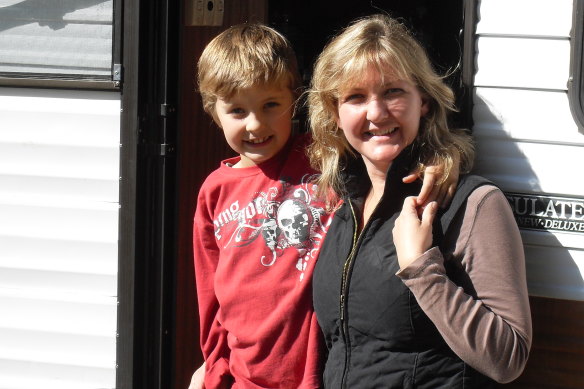
Fiona Leadbeater and Daniel, two months after the Black Saturday fires. Daniel was diagnosed with PTSD about one year later.
We’re all increasingly in the firing line as the climate warms. And yet, who of us even knows about the possibility of wind phobias or language impairment? Or how to ward off lifelong impacts on our kids? Will our nation cope in the years ahead when climate change brings multiple disasters to our doors?
When I speak with Casey Jones in May, five months have passed since an “inland tsunami” smashed into her home in the small western NSW town of Eugowra last November. Water struck in two tumultuous waves; the first, knee-height, propelled Jones to flee her car and race inside the nearest dwelling; the second, mere minutes later, carried a house past the half-swamped windows of her shelter, forcing her to contemplate the unthinkable – heading back outside to try to reach the roof.
Worse still, this 36-year-old mother of two was carrying her two-year-old daughter, Korra. “That was the scariest bit,” Jones says. “I had a jumper on, and I thought, ‘I can tie her tight into my jumper, so at least if we wash away, we’ll be found together.’ ”
Water burst through the door. Taking a big gulp of air in case she was swept under, Jones grabbed Korra and, with the help of a young man trapped inside with them, they pushed their way out past the rampaging torrent, along a wall, then onto a Landcruiser before clambering onto the roof. There they remained for six terrifying hours punctuated by neighbours screaming for help. All the while Jones did not once drop Korra, using her free hand to haul herself onto the car and roof with a strength the slight woman did not know she was capable of. It was only when a helicopter came that she was finally forced to let Korra go, zipping the rescue bag over her daughter’s crying face as she was winched to safety.
“The sound of tin rumbling makes me want to run. If I see rain on the ground or puddles, I feel sick and my heart races.”
Casey Jones
This is the only moment in her recounting when Jones’s voice shakes. She still has dreams where she thinks she’s drowning, choking. But the worst are those in which she drops her daughter. “That haunts me,” she says.
For a long time she couldn’t zip Korra into a sleeping bag – a necessity given they’ve lost everything and their home is still a caravan. And it took ages before she could bathe her, as Korra screamed at the sight of water. The smell of dirty water makes Jones “break out in a sweat. The sound of tin rumbling makes me want to run. If I see rain on the ground or puddles, I feel sick and my heart races.”
Jones feels guilty that she’s not coping while, somehow, others in her town are. Because, she says, no one around her is talking about this. She has tried to get help, but a shortage of psychologists has meant she hasn’t been able to access a specialist – and the health professional she could speak to advised her to try warm milk before bed. “I feel defeated,” she says softly.
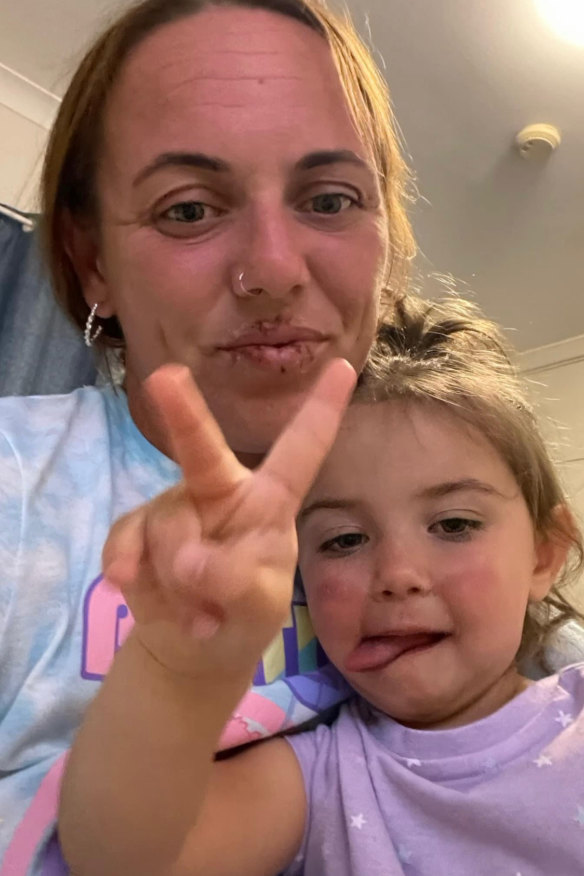
Casey Jones and daughter Korra survived an “inland tsunami”. Their faces show sunburn from being stranded on a car roof for six hours.
It’s clear that after a disaster, misplaced guilt about not being “resilient” enough is distressingly common. “People need reassuring that this is not a personal failing,” explains Dr Rob Gordon, a psychologist and disaster expert based in Melbourne. “For many people, this will be the first time in their lives they feel they are not able to control their minds. That they’re ‘weak’, or they’ve failed their family. And they will be ashamed of that. But they have to understand these are normal reactions to abnormal events.”
Gordon, who is also a consultant to the Australian Red Cross, should know. He’s helped the post-disaster recovery of probably more people than just about anyone else in the country, including after the Bali bombings, the Lockyer Valley floods and the Black Saturday bushfires. Over time, the 76-year-old has noticed a pattern: that after a disaster, it’s normal for our brains to go through three broad phases. He’s dubbed them “adrenaline/hyperactivity mode”, “cortisol mode” and the “identity crisis”.
Phase one begins with adrenaline, survival’s “super-serum” – the fast-acting neurotransmitter exquisitely designed by evolution for rapid response. As skies blacken with choking smoke, as waters rise relentlessly through floorboards, adrenaline floods our system, unleashing a cascade of chemicals. Parts of the brain ramp up: vision, touch, hearing; our motor centres. This is where the superhuman strength comes from; hence, Casey Jones’s action-hero ability to carry her child for six hours. But with the sensory parts of the brain so wide open, it’s as if the images, sounds, smells – the smoke, the wind – can get seared into the brain. Gordon likens this to a “brain wound”, which needs the right circumstances to heal. This is why trauma sufferers are prone to “reliving” the experience and why, when describing it, they will often look up and around as if they are still there. That’s a problem with PTSD: these full sensory recollections can trigger the same feelings of danger that caused the original trauma.
Meanwhile, other parts of the brain – perhaps judged by evolution as temporarily superfluous – are progressively shutting down: language, complex planning, even emotions can go offline. The “adrenaline brain” switches off after a regular crisis, but the problem for disaster survivors is that in overwhelming circumstances it doesn’t.
“The original threat is the fire or flood,” Gordon explains. “Then it will be the evacuation, dealing with accommodation, insurance, bureaucracy, more floods or fire, so the adrenaline/hyperactivity mode can take weeks or months to settle.”
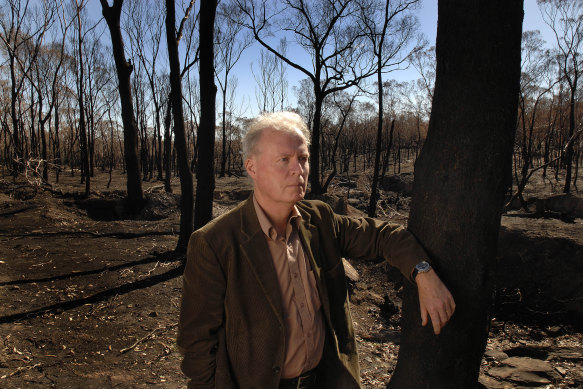
Dr Rob Gordon has noticed a three-stage pattern in disaster recovery.Credit: Daryl Pinder
Social scientists who’ve studied disasters call the initial period after the disaster the “honeymoon phase”, when everyone in the community pulls together. But people are also jittery, unable to sleep. All that adrenaline is using up our reserves. Eventually, it arrives. The crash. Brain fog. Exhaustion. This is phase two – “cortisol mode”, named by Gordon for the slower-acting stress hormone that kicks in after the adrenaline has fallen away. It’s the endurance mode. He also calls it, evocatively, “zombie mode”.
“Cortisol mode can last a couple of months to years,” he explains. “People don’t understand this. And that is where lives can unravel – it can lead to relationship problems because you don’t have the spare energy to be nice.”
Only when our systems settle – which can take a year or more – can our brains find the bandwidth to move to phase three: the identity crisis. “This is where we take stock and go, ‘Who am I, now that the life I was leading has gone off track?’” says Gordon. “You start grieving what you lost and looking to where you are heading. And in many ways, this can free up new possibilities for your future, to ask yourself, ‘How might I like to live my life now?’ People describe it as a watershed moment.”
I spoke with dozens of people for this article – from NSW Northern Rivers flood survivors at the one-year mark to Black Summer survivors at three years-plus – all of whom nodded in fervent recognition of these three phases. Many still don’t feel quite themselves. Rebecca, a victim of the floods in the Northern Rivers, was still in shock after she was rescued.
“That was really good,” she says of the adrenaline surge. “It should last a lot longer!” She not only lost her home, but pretty much everything in it, including her great-grandmother’s piano she’d had since she was 11. “That was the only time I cried.”
All too soon, though, came the crash. With 6200 homes damaged or destroyed by the Northern Rivers floods, Rebecca, like many, couldn’t find accommodation. She and her three kids resorted to living in a house that was mid-renovation with blow-up beds, no fridge and no washing machine – for months.
“When I look back, it’s really foggy and blurry. Your brain just didn’t work. Initially, I lost my memory. It was like there were big holes in my brain. Someone would remind me of something that happened and I’d say, ‘Oops – that must have fallen in the hole.’
“And I just ran out of energy. Depressed. There was so much I should have been doing … I’d start, but the brain would just go, ‘Nup.’ I’d end up sitting in the house playing chess online. I felt so guilty about that. If I’d known it was normal, it would have made it easier.”
“My friend tried to go back to work a few months after the flood. And the boss virtually said, ‘Aren’t you over it yet?’ ”
A woman from Lismore
In “cortisol mode”, the brain functions that went offline in the crisis still haven’t fully returned. And it’s hard to return to work with your brain a-jumble. Most people I speak with tried two or three times before they could finally handle it. “My friend tried to go back to work a few months after the flood,” a woman from Lismore tells me. “And the boss virtually said, ‘Aren’t you over it yet?’ ”
These are the words disaster survivors come to hate. “It lasts as long as you are overloaded,” explains Gordon. “It won’t dissipate until you can establish a new routine. You can’t relax in temporary accommodation – you have to think about everything; even where your toothbrush is. It uses up all your resources.”
The word “rain” is the unsurprising response when I ask survivors of the record-breaking floods in Lismore and the wider Northern Rivers about triggers. Casey Jones’s panic attacks around puddles and dirty water are understandable. But others are less obviously linked to the disaster. A mate of mine in fire-ravaged Mallacoota, Victoria, tells me of a friend who couldn’t sleep inside for a while – his brain had equated “inside” with danger. “There’s a fragment in our primitive reptile brain that does something called associative learning,” Gordon explains. “And it’s very crude. It learns that, say, smoke happened at the time, therefore every time you see smoke or even fog, the brain should go straight to adrenaline mode, even to the point of having a panic attack. I usually say you won’t know if you have triggers until you are triggered.”
The reactions settle down in some people but grow worse in others, their brains becoming stuck in adrenaline mode. Nightmares, trigger phobias, hypervigilance and flashbacks; one man from a flood region tells me he regularly wakes in the early hours with the taste of muddy water in his mouth. These are classic features of PTSD, with some, unfortunately, turning to substance abuse to cope. First responders and those who feared for their lives or loved ones are particularly vulnerable, their “wounds” perhaps seared deeper.
At first glance, the results of longitudinal studies of kids who went through Black Saturday seem a little daunting. For students in the highly impacted schools, expected progress in reading and numeracy in year 3 and 5, two to four years after the fires, was slower than their peers. The repercussions from the learning delays resulting from that early disaster experience were still being felt across all subjects in year 9, according to the 10 Years Beyond Bushfires Report on the Black Saturday bushfires aftermath, published in March 2021.
“We need to acknowledge that many will need extra help, but we must not catastrophise,” says Professor Lisa Gibbs, a disaster recovery specialist at the University of Melbourne. “These differences are averages. Not every kid will have their school results impacted.”
Reassuringly, Gibbs says there is growing evidence that schools-based programs that involve parents can help. “Read with your child,” she advises. “Play numbers games at home – if you’re playing a game, get the kids to keep score. It all helps restore skills and confidence.” She adds: “With every generation there were major challenging crises. We need some acceptance of this. The key thing is with each cohort that goes through, we will get better at supporting these kids.”
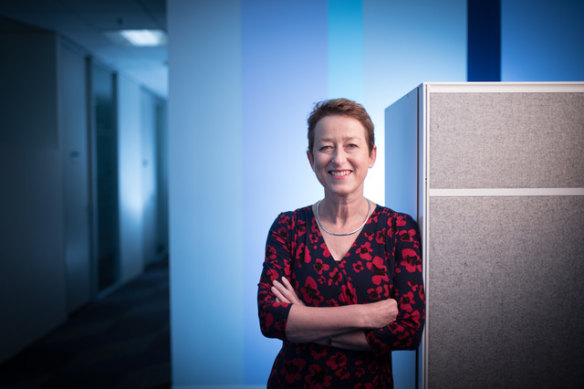
Professor Lisa Gibbs is a disaster recovery specialist at the University of Melbourne. “We need to acknowledge that many will need extra help, but we must not catastrophise,” she says.
What will our lives look like in 10 to 15 years’ time when we have at least another 0.3 degrees of heating supercharging extreme weather? Will we even have enough mental health professionals to cope with the rising disaster load?
It’s a question that keeps Alexandra Howard up at night. She’s the director of the new disasters and public health emergencies portfolio at Phoenix Australia, which specialises in post-traumatic mental health. “I can say this because I’m a clinical psychologist, but clinical psychologists are not going to be the answer,” she tells me wryly. Since 2020, Howard and her colleagues have been working on a visionary idea for expanding our disaster mental health workforce. Which is why I’m talking to my new disaster coach, Professor Meaghan O’Donnell, who sets me some homework.
The task she’s given me is to write about the disaster I’ve been through in a particular way. In my case, it was the Black Summer bushfires. My experience was relatively mild – my life was never at risk. But my home came under regular ash fall, and those I loved most were in the path of the inferno: my dad and brother in the NSW Southern Highlands and, horrendously, my mum in bushfire-razed Mallacoota (her home survived, unlike many others in her street).
“Over time, the emotions with that memory should fade. You remember how you felt, but you no longer feel the strong emotion. But sometimes, those memories get stuck.”
Professor Meaghan O’Donnell
“When we go through a distressing event,” my coach explains, “it’s recorded in our memory. Over time, the emotions with that memory should fade. You remember how you felt, but you no longer feel the strong emotion. But sometimes, those memories get stuck.”
The memories are like a linen cupboard, O’Donnell says, where everything has just been shoved in. So, when you open it, what falls out is what’s in the front. And that tends to be the most distressing bits, the most frightening, the moments that were “seared” into your brain. If you keep shoving them back in, they just keep falling out and smacking you in the face again.
“This is what happens when the brain doesn’t emotionally process the memory,” she says. “So, we are asking you to write about the event in great detail from beginning to end. This helps you remember the good bits; where you were helped or what you learnt about yourself. We do this three times and it helps re-process the memory. It’s like taking the memory out, re-folding it and stacking it neatly back in the cupboard.”
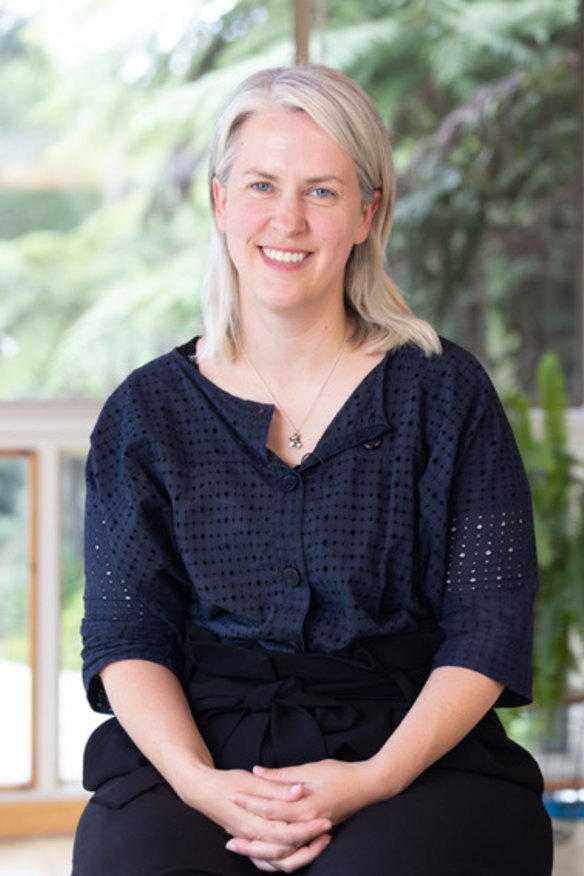
Psychologist Alexandra Howard has helped develop the idea of “disaster coaches” to process trauma.
The program is called SOLAR (Skills for Life Adjustment and Resilience). It was developed by a who’s who of Australian and international disaster trauma experts who asked themselves: what skills would you need to best help the brain recover after a disaster? The result is a program of five weekly sessions, complete with workbooks and homework. “When you have a disaster,” O’Donnell explains, “you get a whole lot of people with emerging symptoms. Over time roughly half will get better, one-third will stay the same and one-fifth will get worse and go on to develop PTSD, anxiety, depression and other symptoms like substance abuse. We want to prevent that progression, to help you through disaster brain as smoothly and safely as possible.”
“This is my big hope for the future,” says Howard. “It’s the missing piece. It sits outside the mental health service and that’s the whole point. So, I imagine interested community members will become disaster coaches: librarians, first responders, council workers, maybe psychology students, who are an underused resource. We need to get these skills out into the community and try to prevent mental health issues in the first place. Alongside better practical support, of course – people struggling with insurance, red tape or housing won’t have good mental health.”
By the time young Black Saturday victim Daniel Leadbeater was 14 – he’s 22 now – his mother Fiona was at her wits’ end. Then she heard about a psychologist who specialised in treating emergency services personnel. Fiona begged him to help her boy. “He changed Daniel that very first session,” she tells me, relief all over her face.
Why was it different that time? “Well, the first thing he said to Daniel was, ‘You are not going crazy.’ And then he explained that what he was experiencing was a mechanism of his primitive brain. And guess what, that’s not controlled by you. Your lizard brain says, ‘I think there’s danger,’ and if you ignore it, it gives you hot and cold sweat; then it makes your heart race, until you take notice.”
Leadbeater adds: “Then he gave Daniel a little stretchy lizard toy and he had it in his pocket for ages. The other thing he gave him was a toy dragon, and he asked, ‘Do you know what this is?’ ‘Yeah,’ Daniel said, ‘it’s from [the movie] How to Train Your Dragon.’ And he said, ’So that’s what we’re going to do. We’re going to train your dragon, your lizard brain.”
Daniel saw the psychologist for a year, working on mindfulness and cognitive behavioural therapy techniques to “re-train” this primitive part of his brain.
But Fiona Leadbeater is convinced it was that first explanation of the brain science that turned everything around. “He’s a typical knockabout Aussie young man who loves his car and his fishing, but he’s really insightful. He’s just a well-rounded, resilient individual.”
After a pause, she adds: “And you know what? The other day he came up to me and said, ‘If I had to go through it again, I wouldn’t take it back. It’s part of me now – it’s who I am.’ ”
Beyond Blue: 1300 224 636
To read more from Good Weekend magazine, visit our page at The Sydney Morning Herald, The Age and Brisbane Times.